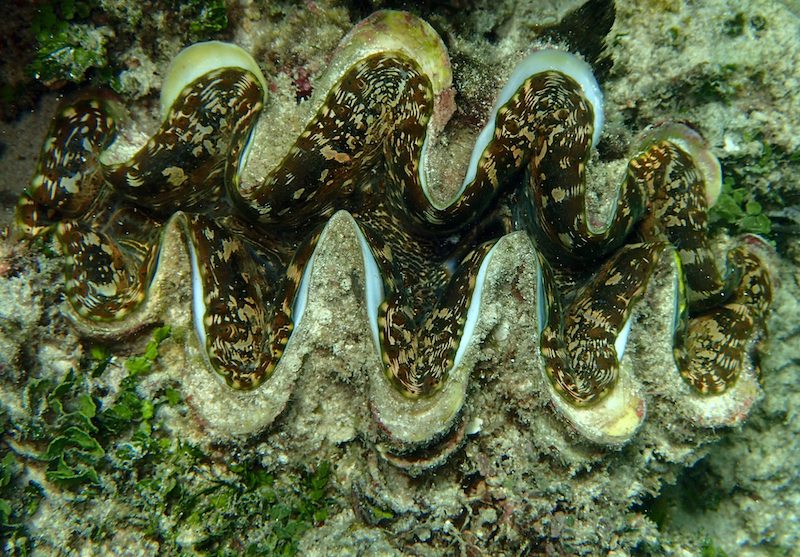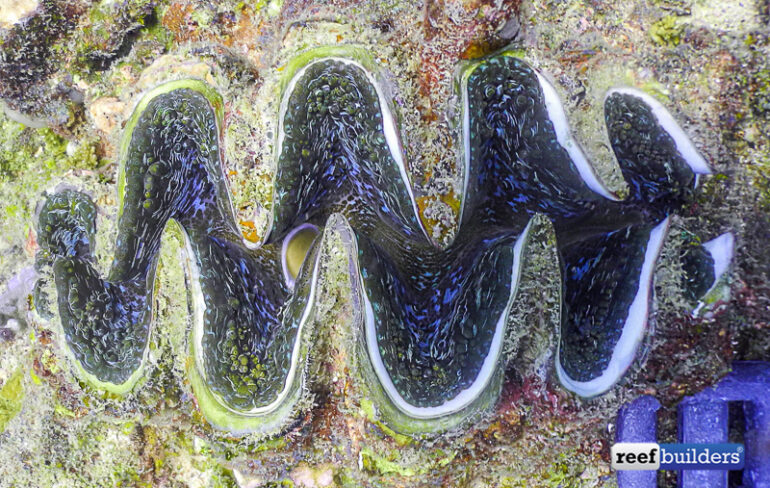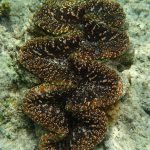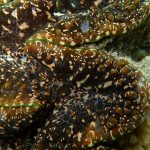Tridacna elongatissima is a species of giant clam that was first described from the Western Indian Ocean all the way back in 1856. Somewhere along the way the characteristics of this species were thought to be synonymous with Tridacna maxima but at long last this unique species is getting the recognition it deserves.
We were almost there way back in 2015 when we noticed that some large clams from Mozambique were definitely not a maxima clam, but made the incorrect assumption that it was the then recently described Tridacna squamosina (= T. costata). Then we did it again just last fall some when images of similar clams from Kenya turned up on some dive photos, but with new information we are more confident now that these are both the long lost Tridacna elongatissima.

In both sets of images you can tell from the surrounding marine life that these are not small clams – not the scale of T. gigas, but still much larger than what we expect from any T.maxima we’ve ever seen or heard of. Furthermore the vertical folds of the shells are some of the deepest and most extreme we’ve ever seen and unlike almost all other clams known, but reminiscent of the poorly known T. rosewateri.
Tridacna elongatissima was originally described from Mozambique but the new taxonomic designation comes from a recent in-depth genetic research study looking at all the clams of the Western Indian Ocean with some interesting conclusions. It took more than 14 researchers and several years to both sample genetic tissue across this vast range, perform the genetic analysis, and then the statistical analysis to piece together a clearer picture of what clams are in the Indian Ocean and where.
The results concluded that collected samples only showed Tridacna squamosina occuring in the Red Sea and Tridacna elongatissima occurring in the southwestern Indian Ocean. Furthermore, an obscure description of a new species from 2017, Tridacna lorenzi appeared to be the same as T. rosewateri mentioned before. As big fans of the giant clams, this is one of the best papers we’ve ever read to learn more and better understand this fascinating group, and to learn more about obscure and forgotten species from the western Indian Ocean. [Journal of Biogeography]





